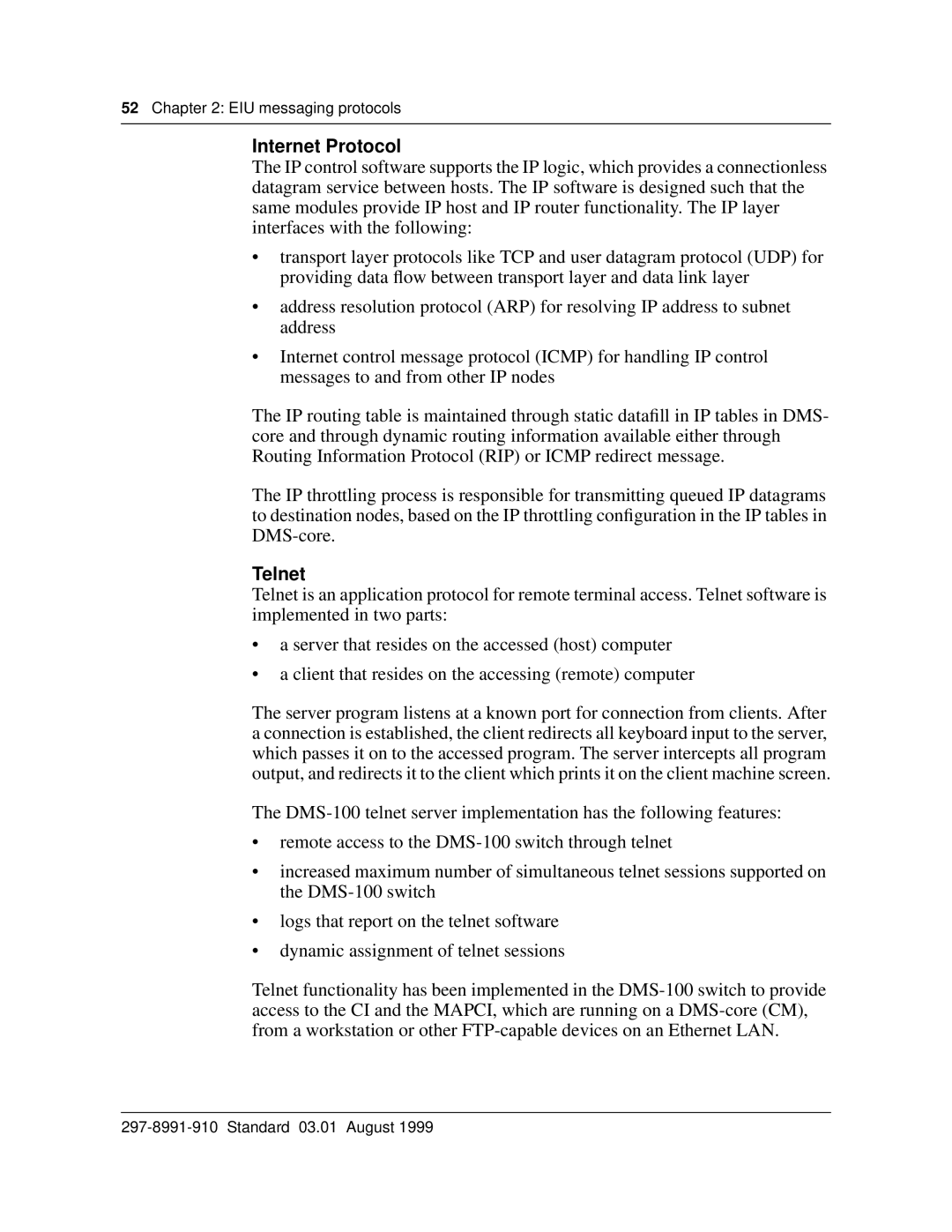
52Chapter 2: EIU messaging protocols
Internet Protocol
The IP control software supports the IP logic, which provides a connectionless datagram service between hosts. The IP software is designed such that the same modules provide IP host and IP router functionality. The IP layer interfaces with the following:
•transport layer protocols like TCP and user datagram protocol (UDP) for providing data flow between transport layer and data link layer
•address resolution protocol (ARP) for resolving IP address to subnet address
•Internet control message protocol (ICMP) for handling IP control messages to and from other IP nodes
The IP routing table is maintained through static datafill in IP tables in DMS- core and through dynamic routing information available either through Routing Information Protocol (RIP) or ICMP redirect message.
The IP throttling process is responsible for transmitting queued IP datagrams to destination nodes, based on the IP throttling configuration in the IP tables in
Telnet
Telnet is an application protocol for remote terminal access. Telnet software is implemented in two parts:
•a server that resides on the accessed (host) computer
•a client that resides on the accessing (remote) computer
The server program listens at a known port for connection from clients. After a connection is established, the client redirects all keyboard input to the server, which passes it on to the accessed program. The server intercepts all program output, and redirects it to the client which prints it on the client machine screen.
The
•remote access to the
•increased maximum number of simultaneous telnet sessions supported on the
•logs that report on the telnet software
•dynamic assignment of telnet sessions
Telnet functionality has been implemented in the
